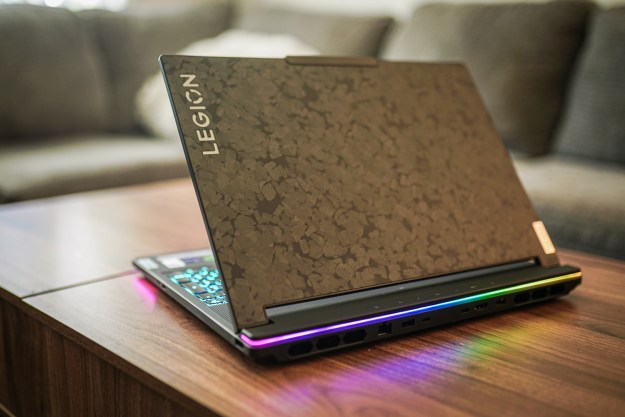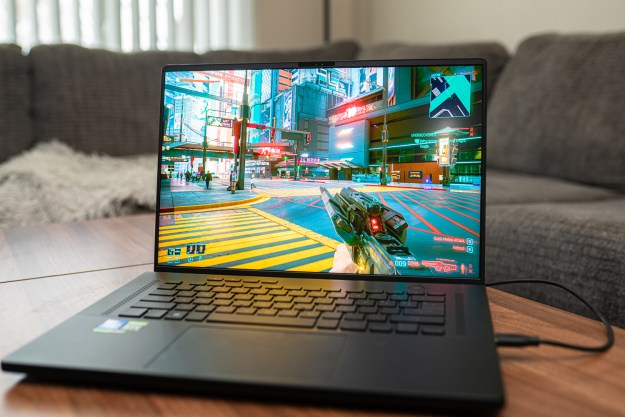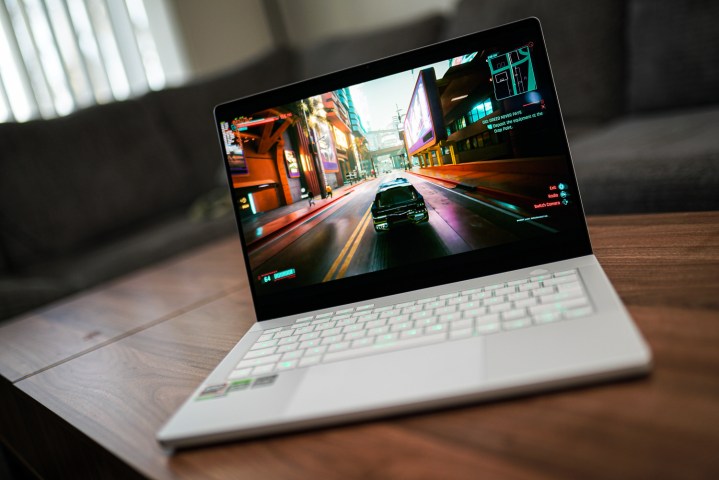
Over the past few years, the category of 14-inch gaming laptops has grown tremendously. You’ll find multiple models among the best gaming laptops, but there are three key designs that are all begging to be your high-end portable gaming powerhouse.
I’m talking about the Razer Blade 14, Asus ROG Zephyrus G14, and HP Omen Transcend 14. All three are thin and light
Specs and pricing
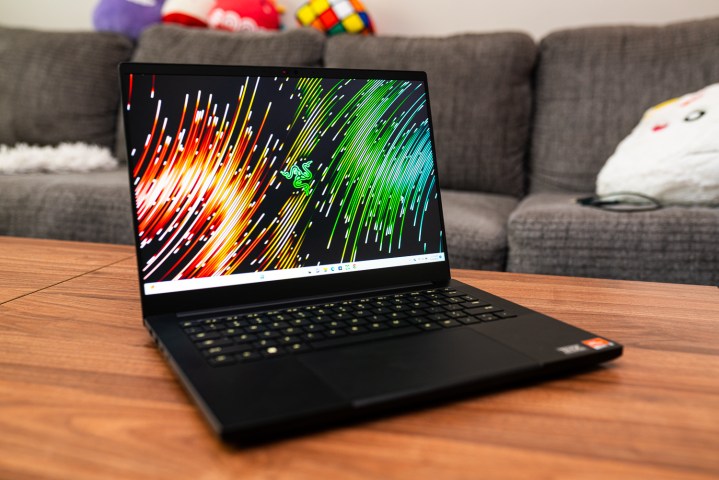
Out of the three, the easiest laptop to start with is the Razer Blade 14. It’s the most expensive of the trio, coming in at $2,200 for an RTX 4060 and $2,700 for an RTX 4070. Those are the only two GPU options, and Razer pairs them both with an AMD Ryzen 9 8945HS and 1TB of storage. The RTX 4060 configuration comes with 16GB of memory, while the RTX 4070 bumps that spec to 32GB.
With only two main configurations, your options for customization are limited. You can’t get more than 1TB of storage, for example, but the design of the Blade 14 features slot-in RAM and storage, so you can replace these components on your own down the line.
The Asus ROG Zephyrus G14 is very similar. Asus also bases its design around the Ryzen 9 8945HS, and you have the option between an RTX 4060 and an RTX 4070. Similarly, Asus packs in a 1TB SSD and 16GB of memory for the RTX 4060 configuration and 32GB for the RTX 4070 configuration. It’s identical to the Razer Blade 14, but Asus’ laptop comes in significantly cheaper. The RTX 4060 model is $1,600, while the RTX 4070 model is $2,000. You’re saving anywhere from $600 to $700 compared to the Razer Blade 14 with the same specs.
| HP Omen Transcend 14 (as reviewed) | Razer Blade 14 (as reviewed) | Asus ROG Zephyrus G14 (as reviewed) | |
| Dimensions | 12.32 x 9.19 x 0.67 inches | 0.7 x 8.97 x 12.23 inches | 12.24 x 8.88 x 0.64 inches |
| Weight | 3.6 pounds | 4.05 pounds | 3.31 pounds |
| Processor | Intel Core Ultra 7 155H | AMD Ryzen 7 8945HS | AMD Ryzen 9 8945HS |
| Graphics | Nvidia RTX 4060 (90W TGP) | Nvidia RTX 4070 mobile (140W TGP) | Nvidia RTX 4070 (90W TGP) |
| RAM | 16GB | 16 GB DDR5-5600 | 32GB LPDDR5X-6400 (soldered) |
| Display | 2,880 x 1,800, OLED, 120Hz | 2560 x 1600, 240Hz IPS | 3K (2,880 x 1,800) OLED, 120Hz, G-Sync |
| Storage | 1TB PCIe Gen 4 SSD | 1TB PCIe Gen 4 SSD | 1TB PCIe 4.0 NVMe SSD |
| Touch | N/A | N/A | N/A |
| Ports | 2x USB 3.2 Gen 2 Type-A, 1x Thunderbolt 4, 1x USB 3.2 Gen 2 Type-C, 1x HDMI 2.1, 1x 3.5mm headphone | 2 x USB 3.2 Gen 2 Type-A ports, 2x USB4 Type-C ports, 1x HDMI 2.1, 1x 3.5mm audio | 2x USB 3.2 Gen 2 Type-A, 1x HDMI 2.1, 1x 3.5mm, 1x USB 3.2 Gen 2 Type-C, 1x USB 4 Type-C w/ 100W power delivery, 1x microSD card reader |
| Wireless | Bluetooth 5.3, Wi-Fi 6E | WI-Fi 6E, Bluetooth 5.2 | Bluetooth 5.3, Wi-Fi 6E |
| Webcam | 1080p with Windows Hello | 1080p Windows Hello with privacy shutter | 1080p w/ Windows Hello |
| Operating system | Windows 11 Home | Windows 11 Home | Windows 11 Pro |
| Battery | 71 WHr | 68.1-Whr battery | 73WHrs |
| Where to buy |
There’s one big caveat to the Zephyrus G14’s specs, however — the
Finally, there’s the Omen Transcend 14. It’s the biggest departure from the other two in terms of specs due to the fact that it’s built around one of Intel’s Meteor Lake CPUs. You have the option between an Intel Core Ultra 7 155H, paired with either an RTX 4050 or RTX 4060, or an Intel Core Ultra 9 185H, which is paired with an RTX 4070. The first configurations come with 16GB of memory, while the RTX 4070 configuration comes with 32GB.

HP offers many more customization options, particularly in storage. Configurations start with a 512GB SSD, but you can bump that up to 2TB. Like the Zephyrus G14, the
Pricing is tricky because HP provides a lot more options. It has a cheaper starting price of $1,250, but that comes with a weaker RTX 4050 GPU and only 512GB of storage. For a more direct comparison, an RTX 4060 configuration is $1,400, while an RTX 4070 configuration is $1,900.
HP offers the cheapest laptop out of the three, but it’s not much cheaper than the Zephyrus G14 for similar configurations. It’s a tie between HP and Asus for this round, with Razer’s options being far more expensive despite packing slotted memory.
Winner: Tie between HP and Asus
Design

It’s hard to go wrong with any of these
The big differences are between size and weight. The Zephyrus G14 is the thinnest and lightest of the three, coming at only 0.63 inches thick and 3.31 pounds. For reference, the HP Omen Transcend 14 is 3.6 pounds and 0.67 inches thick, while the Blade 14 is the largest at 0.7 inches thick and 4.05 pounds.
All three
Winner: Asus
Keyboard and trackpad
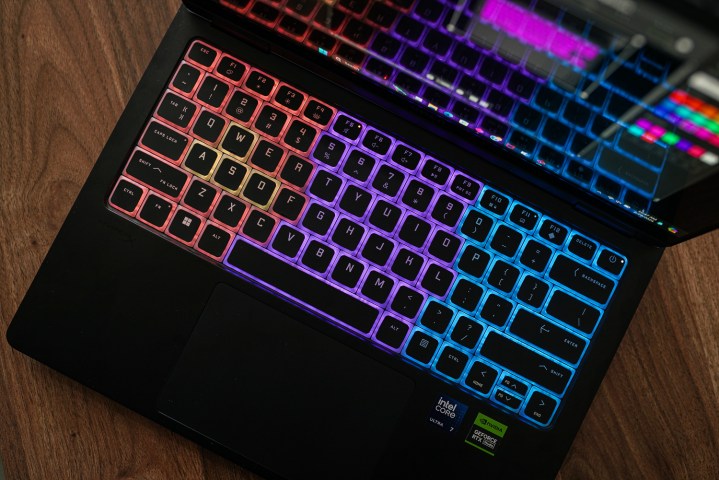
All three of these
Both the Zephyrus G14 and Razer Blade 14 support per-key RGB lighting with a range of effects. The Transcend 14 is separated into four zones, vastly limiting your customization options. HP says it will release versions with per-key RGB lighting later in the year, but for right now, it takes a back seat to the other two options.
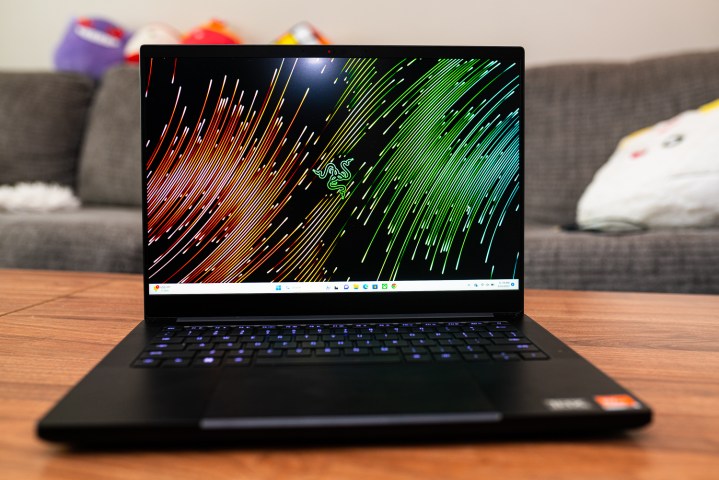
Between the Zephyrus G14 and Razer Blade 14, the
This is a tie between the Zephyrus G14 and Blade 14. I prefer the longer travel of the Zephyrus G14, but if you want a snappier, Macbook-like response, the Blade 14 is the way to go.
Winner: Tie between Razer and Asus
Ports and connectivity

The Blade 14, Zephyrus G14, and Omen Transcend 14 come with almost identical offerings in terms of ports. All three
The main difference is that the Zephyrus G14 has a micro SD card slot, which is something both the Blade 14 and Omen Transcend 14 lack.
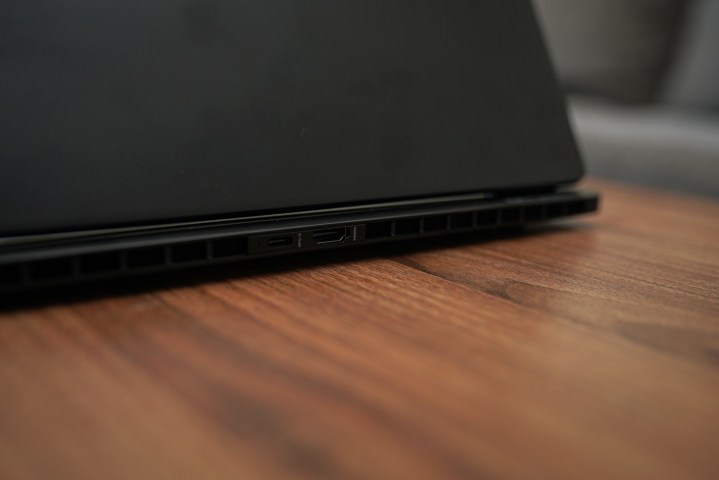
You can charge all three
The Blade 14 and Zephyrus G14 are once again tied here. The Blade 14 has an edge in that both of the USB-C ports support power delivery, but the Zephyrus G14 comes with a micro SD card slot. I imagine the micro SD card slot will be more useful to more people, but it comes down to preference between the two.
Winner: Tie between Razer and Asus
Display
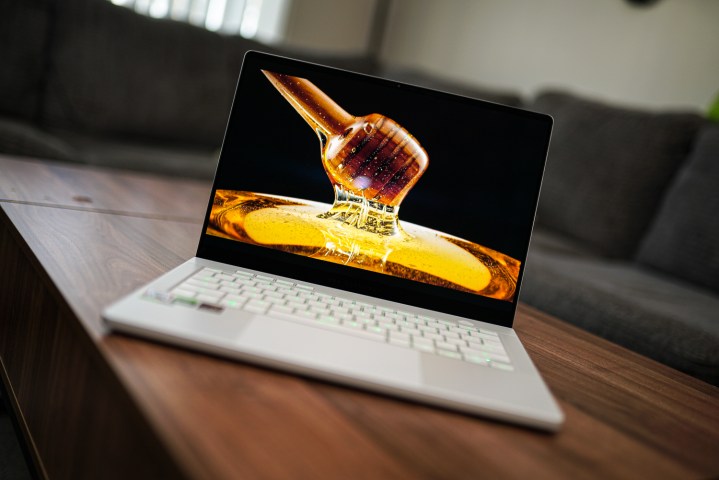
Up to this point, it’s been mostly a battle between the Blade 14 and Zephyrus G14, with the Omen Transcend 14 taking a slight back seat. That changes with the displays. Both the Zephyrus G14 and Omen Transcend 14 include a 2.8K OLED display at 120Hz. That’s a resolution of 2,880 x 1,800, with support for variable refresh rate and response times quoted at 0.2ms.
It’s the exact same screen on both
The Blade 14 is a clear step behind. The IPS panel is color accurate and gets bright enough, but it can’t hold a candle to the inky blacks and infinite contrast granted by OLED. The main point in the Blade 14’s favor is the 240Hz refresh rate, doubling what you get on the HP and Asus
Still, HP and Asus have an undeniable lead here with their OLED displays. You’re getting a higher resolution, a speedy refresh rate, and the fantastic color and
Winner: Tie between HP and Asus
Performance
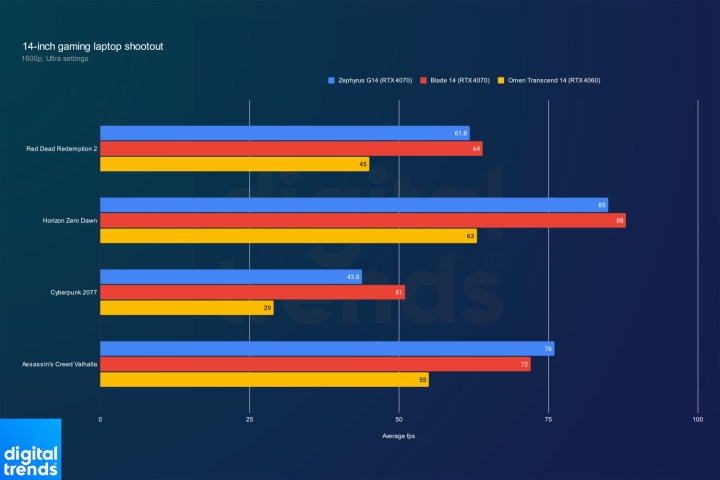
All three of these
Our reviews for these
There are some notable differences when comparing them directly, however. The most glaring is that the Zephyrus G14 and Omen Transcend 14 use a lower Total Graphics Power (TGP) for the graphics card compared to the Blade 14. Even with an identical GPU on paper, the Blade 14 squeezes out more performance in games on average.
The difference is only a few frames typically, but there are cases where the gap is much larger, as showcased by Cyberpunk 2077 above.
In addition, the Core Ultra CPU in the Omen Transcend 14 is generally weaker than the Ryzen offerings in the Blade 14 and Zephyrus G14, at least for the Core Ultra 7 155H that we reviewed. The Core Ultra 9 185H will likely close the gap, but the Razer and Asus
That doesn’t make a huge difference in this section, however. If you’re after the highest performance, there’s no better option than the Razer Blade 14. The Zephyrus G14 gets close, and the Omen Transcend 14 isn’t far behind in third place, but the Blade 14 still tops the charts.
Winner: Razer
Which 14-inch gaming laptop should you buy?

Tallying up the wins, the Asus ROG Zephyrus G14 comes out on top. In some places, such as pricing, the Omen Transcend 14 is a bit better. In others, such as peak performance, the Blade 14 comes out on top. The Zephyrus G14 is balanced, however. It offers enough performance for a much lower price compared to the Blade 14, and it’s thinner and lighter than the Omen Transcend 14.
This is a very close fight, though. For me, the hardest decision is between the Razer Blade 14 and Zephyrus G14. After using both, I found that the Blade 14 is the better laptop — however, it’s not worth the extra $600 to $700 Razer is asking for it. Even spending an extra $200 on it is hard to justify with how great the Zephyrus G14 is.
The Omen Transcend 14 is in last place. It doesn’t feel quite as premium as the other two models, and it has a price to reflect that. It’s not a bad laptop, hitting similar marks to its two rivals here, but most people are better off with the Zephyrus G14 or Blade 14 if you have the cash to spare.
One laptop I omitted from this shootout is the Alienware x14 R2. It’s a great 14-inch gaming laptop, but it hasn’t seen an update for 2024 quite yet. If you’re waiting a bit, that’s definitely one to keep an eye on — the Alienware x16 received an update recently, so I expect an update to the x14 is in the works.
Editors' Recommendations
- Razer made the best gaming mouse even better
- 2 gaming laptops you should buy instead of the Razer Blade
- I can’t wait for ARM-based gaming laptops
- We just learned two critical details about the 2024 Zephyrus G14
- The best gaming laptops we saw at CES 2024



